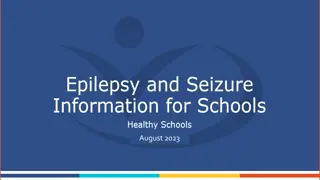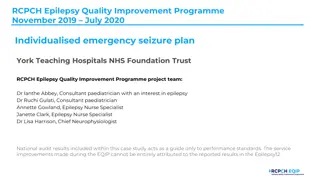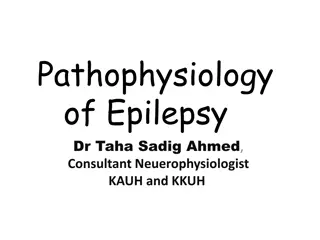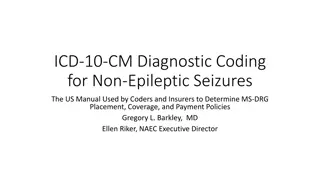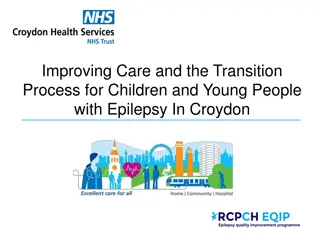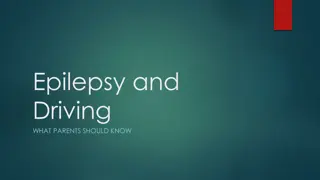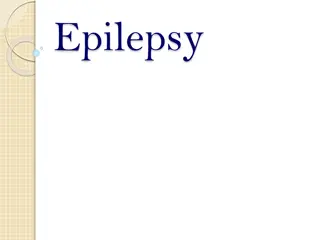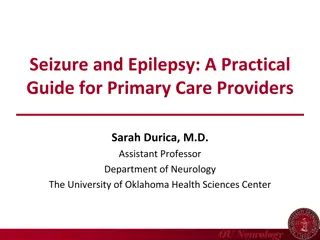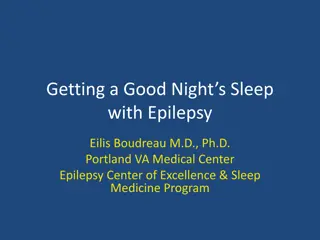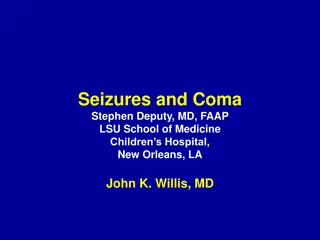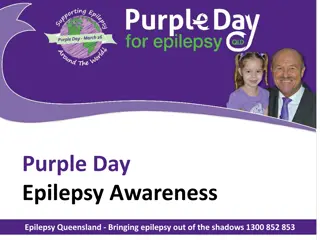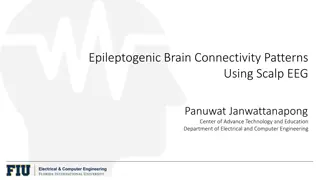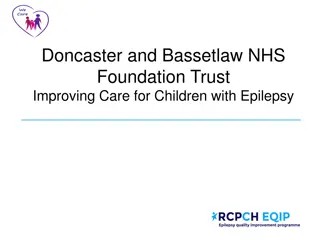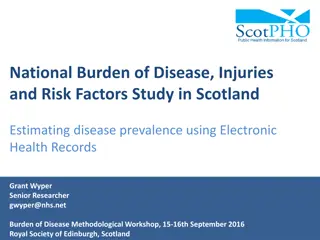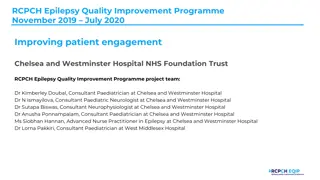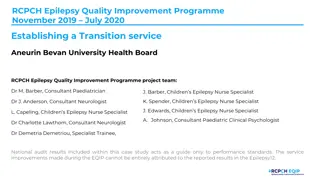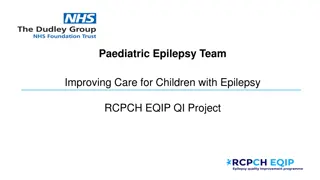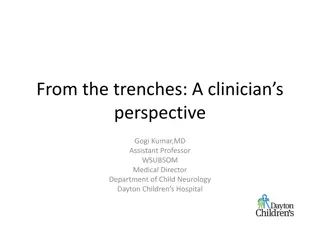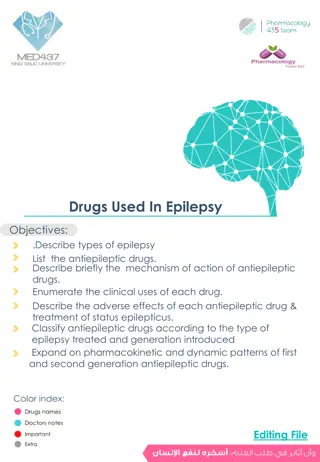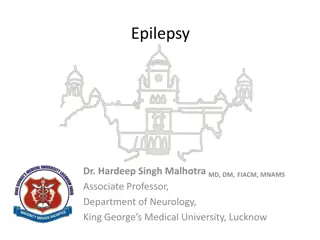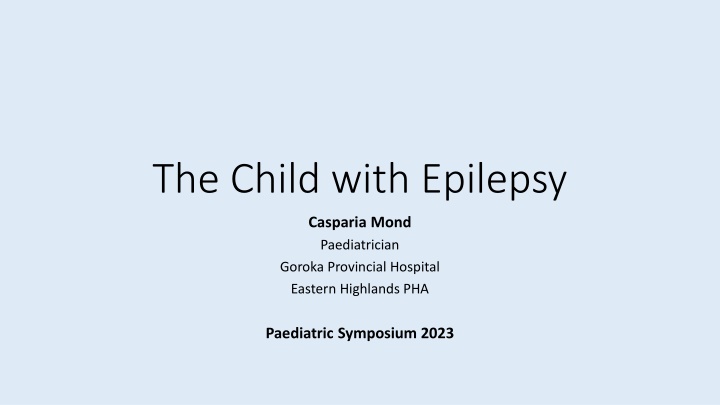
Global Efforts to Address Epilepsy Burden
Epilepsy is a significant public health concern affecting millions worldwide, with a large treatment gap especially in LMICs. Efforts at global levels aim to reduce this burden by advocating for integrated action at the country level and emphasizing the importance of mental health conditions. Proper management protocols, including the use of affordable AEDs, can help achieve better seizure control and improve the quality of life for individuals with epilepsy.
Download Presentation

Please find below an Image/Link to download the presentation.
The content on the website is provided AS IS for your information and personal use only. It may not be sold, licensed, or shared on other websites without obtaining consent from the author. If you encounter any issues during the download, it is possible that the publisher has removed the file from their server.
You are allowed to download the files provided on this website for personal or commercial use, subject to the condition that they are used lawfully. All files are the property of their respective owners.
The content on the website is provided AS IS for your information and personal use only. It may not be sold, licensed, or shared on other websites without obtaining consent from the author.
E N D
Presentation Transcript
The Child with Epilepsy Casparia Mond Paediatrician Goroka Provincial Hospital Eastern Highlands PHA Paediatric Symposium 2023
Outline Introduction Global Burden Classification of epilepsy AEDs Management Goals Challenges and way forward
Global Epilepsy Burden One of the most common neurological diseases worldwide, affecting over 50 million people of all ages 80% of people with epilepsy live in LMIC countries and most do not have access to adequate treatment Effective AEDs can cost as low as $US5 per year however the treatment gap is great A quarter of epilepsy cases are preventable 70% of people with epilepsy can live seizure free with low cost AEDs Epilepsy, a public health imperative. WHO 2019
Efforts to reduce the burden globally The Sixty-eighth World Health Assembly in 2015, 194 Member States unanimously adopted a resolution on epilepsy The need for coordinated action at the country level to address its health, social, and public knowledge implications Meeting on the prevention and control of noncommunicable diseases (NCDs) in 2018 highlighted the importance of mental health conditions, drawing the attention of policy-makers to integrate epilepsy into action on NCDs and mental health Epilepsy, a public health imperative. WHO 2019
Definition and seizure control Epilepsy is defined as two or more unprovoked seizures occurring more than 24 hours apart 70% of people with epilepsy can live seizure free with low cost seizure medication 30% resistant to treatment If resistant to one AED, increase to maximum dose as long as no side effects If still resistant: start a second AED with a different mechanism of action and different side effect profile If the addition of the 2nd AED causes the seizures to cease, slowly withdraw the 1st drug
Classification Source: Epilepsy, a public health imperative. WHO 2019
Common AEDs and adverse effects Carbamazepine - Nausea, vomiting, diarrhoea, hyponatremia, rash, pruritus, and fluid retention, ataxia with high doses, Leukopenia, aplastic anaemia (rare), Stevens Johnson Syndrome Phenobarbital - Sedation, difficulty concentration, mood changes, depression, hyperactivity in children, reduced bone density Phenytoin - Gum hypertrophy, rash, folic acid depletion, reduced bone density, confusion, slurred speech, double vision, ataxia, neuropathy Valproic acid - Hepatic toxicity and pancreatitis, teratogenic, do not give adolescent girls
Anticonvulsant Treatment Focal seizures Carbamazepine, phenytoin, phenobarbitone, levetiracetam Generalised seizures Valproic acid (sodium valproate) most effective in generalised epilepsy Phenobarbitone and levetiracetam
Goals of treatment Seizure freedom Treatment of comorbidities Improved school attendance Educational attainment Freedom from anticonvulsant complications Improved self esteem Knowledge of epilepsy by child and family
Individualized management plan Type of seizures Anticonvulsants Comorbidities Contact details What to do when a seizure occurs Epilepsyfoundation.org 2013
Current Challenges & Way Forward AEDs not available in most public health facilities procurement process improvement Newer better AEDs available and on the Essential Medicines List but we have no access to them as yet Stigma and discrimination counselling, educating the families and public School attendance families to be encouraged to enrol chn, teachers to be informed Numbers in PNG not known Epilepsy/neuro registers
References Epilepsy a public health imperative. WHO 2019 Epilepsy in the Western Pacific Region Global Campaign against epilepsy. WHO 2004 Moshe SL, et al. Epilepsy: new advances. Lancet 2015 Prof Duke Post Graduate lecture notes on Epilepsy. 2022 epilepsyfoundation.org. 2013 www.epilepsy.com Epilepsy Foundation. 2016

